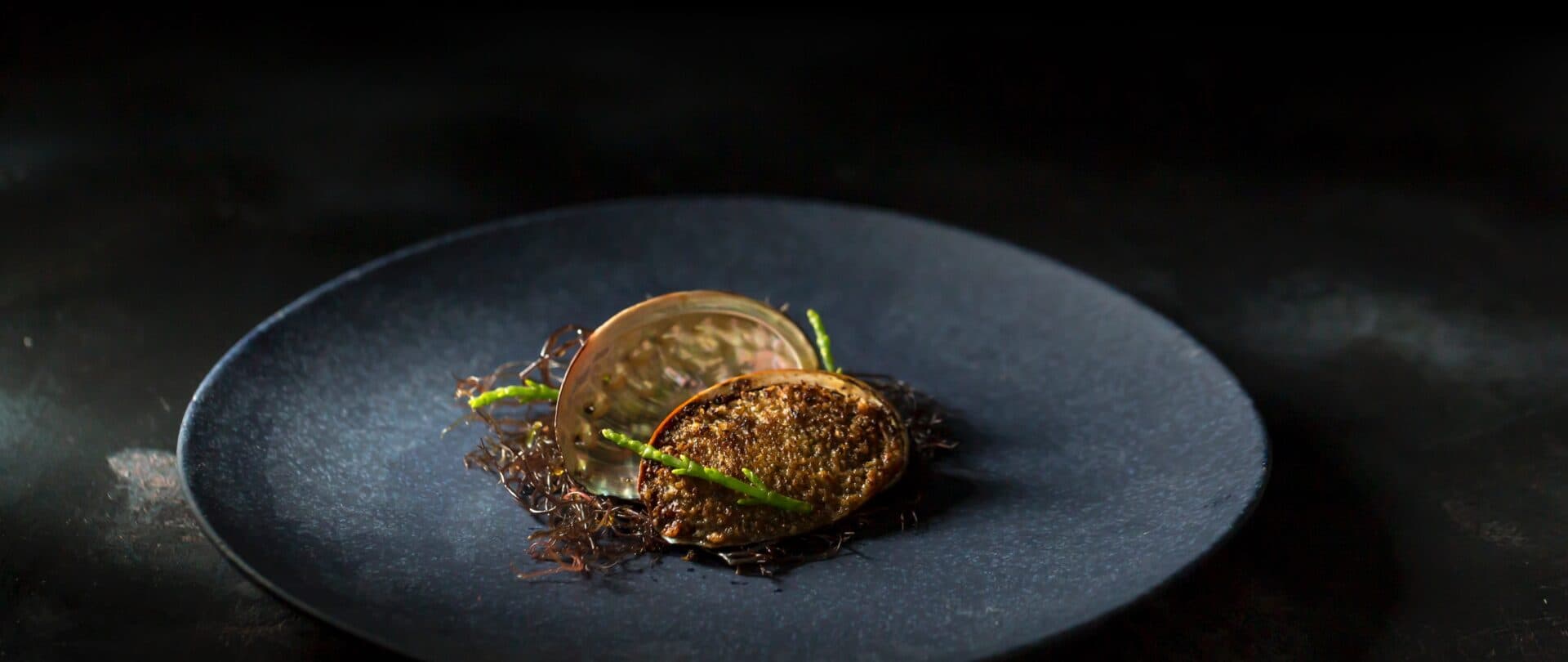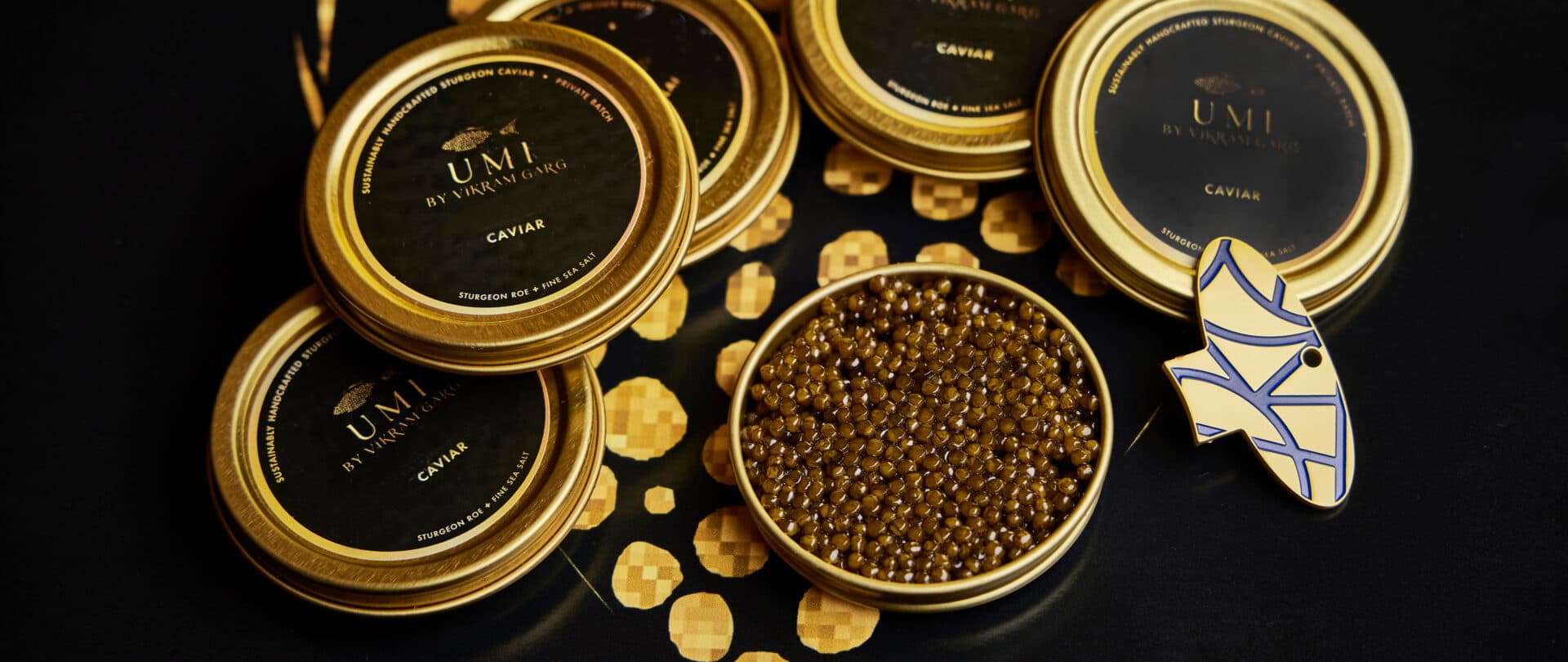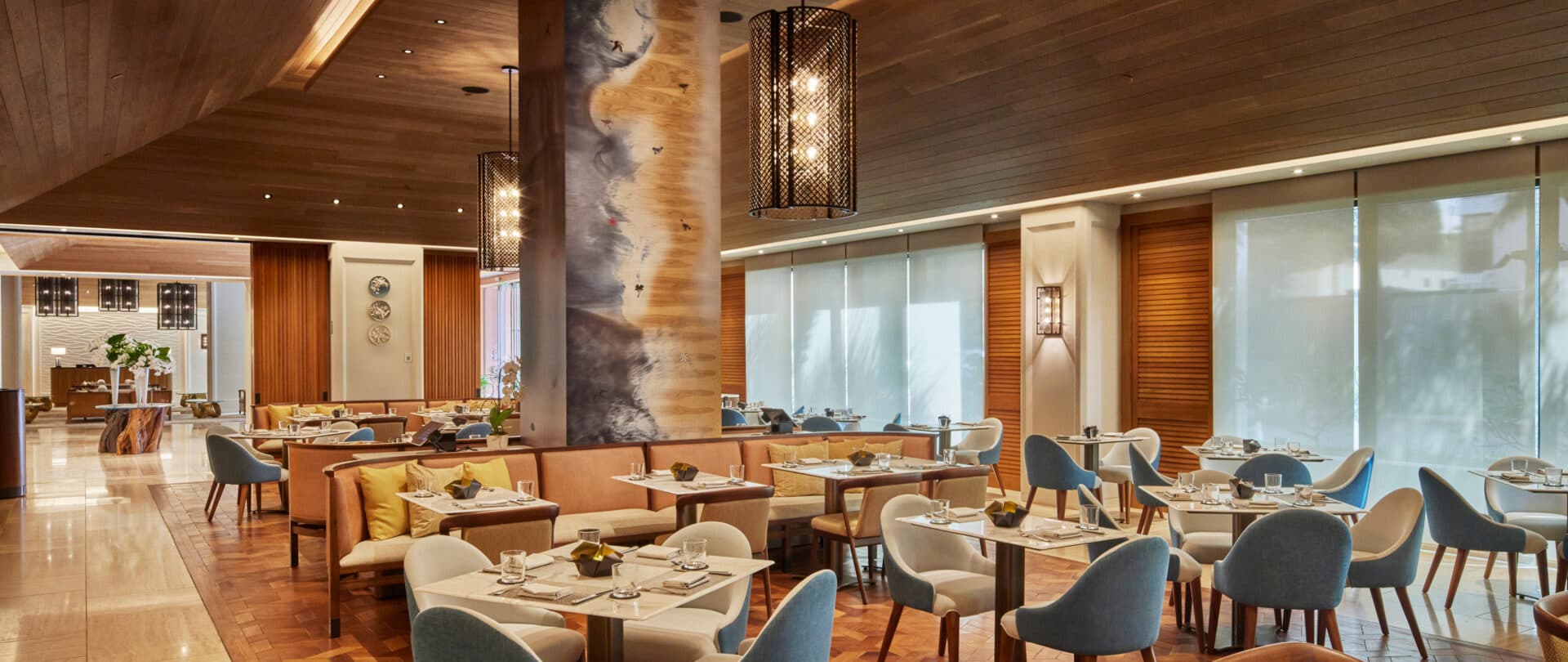Culinary Q&A - Vikram Garg
Blending Art & Science: Chef Vikram Garg melds his roots with international experience in the kitchen.
BY Martha Cheng
Vikram Garg, a graduate of Delhi’s Oberoi School of Hotel Management, worked in hotels and restaurants across the world, including India, the British Virgin Islands and Washington D.C., before he arrived in Honolulu, leading food and beverage at the iconic Halekulani as an executive chef. He struck out on his own in recent years, and in 2023, he opened Umi at the Halepuna Waikīkī. Umi, which means “ocean” in Japanese and “mother” in Arabic, “represents [a] culinary philosophy and commitment to nurture guests and connect cultures,” he has said. The menu reflects his international experiences, with nods to his Indian roots, French training and admiration for Japanese flavors, such as cold-smoked oysters with a tosazu gelee and koji-aged tenderloin with a soy pepper sauce. Read on to learn what drew Garg to the industry and how his unexpected work during the 9/11 crisis inspired a part in a Broadway musical.
What drew you to the culinary industry initially?
I have always enjoyed eating good food, especially a good meal. I was fascinated by the travel and tourism industry, especially hotels and lifestyle. So, I went to hotel school, and culinary classes were a part of it. I enjoyed them so much that I wanted to be a chef.
For me, the beauty of food and beverage lies in its blend of science and art. Whether we’re discussing wine or food, there’s a scientific aspect to it: time, temperature, technique—the fundamentals of cooking. But then, there's the art of combining different flavors, selecting the right chinaware and building a dish. I believe it’s a perfect balance of 50% art and 50% science. I always say that both sides of your brain need to be active to create something truly exceptional when it comes to food and beverage. This passion for the culinary arts drives me and inspires me in my work.
Are there any particularly memorable experiences in your career?
I was on a plane on 9/11, coming from Frankfurt to New York. I used to work as a chef in the Caribbean in those days, but I was in India on a break. Just before landing in New York, the captain said the World Trade Center was under attack, so we had to land [to clear the airspace]. There were about 40 planes that landed in Gander, Newfoundland, Canada, where we were stuck for four days. About 7,000 passengers [were diverted to the town], and about 500 people put up in the gym at Gander Collegiate. By the time we could deplane, it was two in the morning, and everybody was hungry. I started noticing that there were about four or five ladies trying to make breakfast at the cafeteria, and there was a long line—it wasn’t moving. They were local ladies from the neighborhood who came to help and weren’t used to cooking for that many people. So, I went across [to them] and said, ʻMay I help you? I think I can help.’ I went in the back and started cooking. I asked someone to help me and break 100 eggs. We made a big pan of scrambled eggs, cut fruit, toast and preserves. We made a buffet and put everything out there.
I went back into the kitchen, and I could hear them asking, “What are we going to do for lunch? What are we going to do for dinner?” I could see the whole chaos. They didn’t know how to cook for 500 people, but their intentions were good. So, I said, ‘OK, tell me what supplies you have, where you can get it, and I can plan something out.’ We drove to an ice skating rink, [where they were keeping] pallets and pallets of food. I wrote down the menu for the next few days.
We cooked for 500 people for five days—breakfast, lunch and dinner. There’s a Broadway show about it, “Come from Away” [which opened in 2017 about the lives of some of the passengers in Gander], and my role is enacted there.
That was an experience which I would say was not the best time, but one which humbles people and brings everybody—doesn’t matter who you are—together.
What are the favorite parts of your work?
I can work anywhere, anytime, and you don’t know what will happen when you show up for work because you’re basically pleasing a variety of palates. And it’s never the same every day. It’s full of surprises. It’s fun when you get a challenge; it keeps you going. It’s very tangible: you see something you want to create, something new, and you are there creating it.
I know you’ve lived and traveled extensively. What are your favorite eating cities?
Tokyo and Kyoto. About a decade ago, I traveled just to eat for 21 days. I visited Tokyo, New York, San Francisco, Marseille and Paris. I ate at Michelin-starred restaurants, casual neighborhood restaurants and different cuisines, especially in New York and San Francisco— France was predominantly French cuisine. And then my last stop was Tokyo. When I dined there, I had eight meals, and I would say not a single meal was disappointing, whereas, in other places, I could say that it was not worth it, or it was okay.
The passion, the details, the focus on the quality of ingredients, whether it’s a small place serving you a pizza or an egg sandwich, for example, or a Michelin-star restaurant doing French food, the details, the presentation, the service, the experience—it was impeccable. There was no pretense. They were very genuine.
How do you decide where to eat when you travel?
I go through my friends—number one. I have a great network. I hear who’s doing what and who’s the hot chef from colleagues or food industry people. And I look at the 50 Best Restaurants in the World list. When I go to Japan, I’m very specific about all the categories of food I want to eat depending on the season: kappo, definitely, and I’ll pick a sushi, tempura, yakitori or teppanyaki place. I’ll definitely go to the fish market at four o’clock in the morning and eat sushi. And then there’s a place in Ginza where they do the chicken sashimi—I’ve been going there for the past 12 years.





